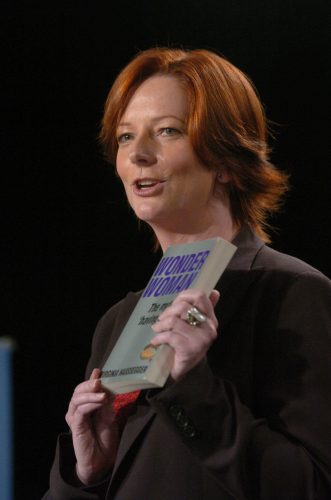Cho Seung-Hui may have been meticulous and well organised when planning his massacre, but he certainly wasn’t creative or original.
What Cho did on Monday when he prowled the corridors of Virginia Tech early in the morning, has been done before. His style, his planning, his infamous message from the dead, all follows the precedent set by other mass murderers who attracted plenty of media attention. It’s just that Cho, tragically, managed to kill many more innocents than his fellow ”slaughter celebrities”.
Expert forensic psychiatrist Professor Paul Mullen, of Monash University, says there is plenty of recent ”cultural precedent” for what Cho did. ”This is a relatively new form of behaviour in Western cultures but one which has now acquired a clear social script and which appears to be becoming increasingly frequent.”
And it would seem Cho followed the script almost to a tee.
Mullen says the perpetrator – always a young, male, isolated loner – ”wants to die in a blaze of glory, seeking revenge against a world that has rejected him”. As for the mandatory video message – ”sent from the grave” – Mullen says it’s central to the whole activity of slaughter and suicide, as it places the perpetrator as the ”hero fighting back against evil”.
And, of course, it ensures maximum publicity.
After all, in the cult of ”evil celebrity” there’s not much point in dying in a blaze of gunfire, blood and guts, unless you’re on television.
It’s no surprise that the rambling so-called ”murder manifesto” Cho posted to a TV network made reference to Eric and Dylan, the Columbine killers. In fact the video messages Cho filmed before he began his slaughter rampage were so similar to the video messages shot by the two Columbine killers, that if you turn down the volume and just watch, you could mistake the three young men as performers in the same rap band.
The package received by the network two days after the massacre included an 1800-word written statement, 27 video files and a couple of dozen photos of Cho brandishing guns and various weapons, in poses taken straight out of the movies. But perhaps most chilling are Cho’s eyes.
Fellow students say Cho never looked anyone in the eye. Ever. His university room-mate said he never heard him speak to anyone either. Yet here he is, as the super ”evil celebrity” star in his videos, not only talking, but eyeballing the camera. It’s a stare that’s audacious in its new-found confidence.
The message in Cho’s information pack is one of a confused and deeply disturbed young man. He rails against the moral laxity of the world, but, as Mullen points out, he demonstrates also a respect for authority. Indeed he wants to assert his own authority. He is furiously envious of his fellow students, but at the same time appears to hate their ”hedonistic” excesses. Directing his diatribe always in the singular to ”you”, Cho makes it clear he feels he is up against the rest of the world. But then typical of the rants and C-grade movie one-liners, at one point Cho insists he is doing ”this” (that is, murdering on a mass scale) ”for my children – I did it for them”. It’s a ridiculous sentiment that makes no sense, as Cho has no children, and obviously won’t be having any, given his intention of suicide. Indeed it would be farcical if it weren’t so tragic, but such is the muddle of disconnected thoughts Cho appears to have swimming through his head.
So was he psychotic? Mullen thinks not. ”He was clearly angry, depressed, self-absorbed,” he says. ”But if he had been seen by a psychiatrist the day before, could he have been admitted? The answer is no”.
Mullen has studied Australia’s mass murderers at very close quarters. The big difference is that they are alive. Either by freak chance, or something to do with our cultural response to extreme danger and attack, Australia’s mass murderers have mostly been tackled to the ground and disarmed. Julian Knight, of Hoddle Street fame, Frank Vitkovic who slaughtered nine people on Queens Street, Martin Bryant, and the Monash University killer have all lived – to languish in jail and mental- health facilities. Once locked away these killers lose any heroic aura they might have had. Rather than assume an ”evil celebrity” status, they are seen as the pathetically fearful and confused young men they really are.
Photographic images of Bryant looking like a bewitched alien, and Knight looking mad, haven’t helped the cause of would-be suicide slaughterers. Suddenly it seems very unglamorous when their evil celebrity status is reduced to prison stripes.
Mullen hopes this will continue to make a difference in Australia. But he is in no doubt about the likelihood of a ”copy-cat” massacre following the Virginia Tech tragedy. He says it won’t happen immediately, despite new copy-cat threats made as recently as Thursday.
Instead Mullen says another similar massacre will occur in two to three months, again according to precedent.
However, the only thing different might be that the next time the killer will have the cameras rolling not just before, but during the event. ”It’s a competition among these men,” Mullen says . A competition for celebrity status of the most evil kind.





